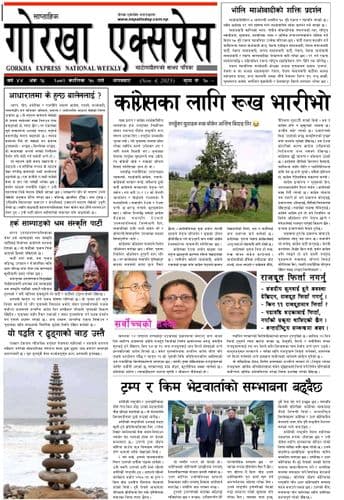
# By Bibek Sagar Poudel --------------------
The Indian Army’s integrated field exercise “Tista Prahar,” conducted at the Tista Firing Range in Sikkim, has showcased the country’s military prowess, technological excellence, and updated strategic thinking. During the exercise, diverse units such as infantry, artillery, armored corps, para special forces, and army aviation collaboratively conducted war drills in complex riverine terrain, demonstrating preparedness for the multifaceted challenges of modern warfare. This exercise not only highlights military capabilities but also signals India’s strategic balance amid border tensions with neighbors like China and Pakistan, growing influence in the Indo-Pacific region, and progress toward a self-reliant defense industry.
Following the Galwan clash along the 3,488 km-long Line of Actual Control (LAC) with China, India has accelerated military deployments and modernization. Exercises like Tista Prahar serve as a competitive response to China’s People’s Liberation Army (PLA) strategies of “high-speed mobile warfare” and cyber-space dominance in Himalayan regions. India’s new theater command structure, designed with this competition in mind, is advancing under the leadership of Army Chief Gen. Anil Chauhan. The first phase aims to integrate the Northern (China-centric), Western (Pakistan-centric), and Maritime Theater Commands, unifying the Army, Navy, and Air Force. However, challenges like inter-service rivalry, limited resources, and infrastructure gaps hinder full implementation.
In the technological domain, India has strengthened its presence through the Defence Research and Development Organisation (DRDO). Indigenous systems tested during Tista Prahar—such as the K-9 Vajra howitzer, Arjun Mark-1A tank, and Future Infantry Soldier (F-INSAS) system—reflect DRDO’s three-decade-long research. These innovations have reduced India’s defense import dependency from 60% to 40%. However, China’s advancements—over 600 AI-enabled military drones, 125+ hypersonic missiles, and quantum encryption networks—pose significant challenges. India is countering this by leveraging ISRO’s satellite surveillance and NTRO’s cyber-security capabilities.
Defense policy-wise, India’s 2023-24 budget allocated ?23,264 crore to defense research, advancing self-reliance. Private firms like L&T and Tata have partnered with DRDO to develop systems like the Prahar cruise missile, countering China’s “String of Pearls” in South Asia and Pakistan’s Gwadar Port. Yet, hurdles remain: China’s defense budget is triple India’s, with plans to modernize the PLA into a “world-class military” by 2035. India’s theater command implementation deadline (2025) faces delays due to inter-service role disputes.
Geopolitically, China’s transit agreements with Nepal and Sonadia Port construction in Bangladesh threaten India’s strategic security. To compete, India prioritizes military cooperation with QUAD allies (US, Japan, Australia).
Ultimately, exercises like Tista Prahar symbolize India’s military reforms and diplomatic resolve. They demonstrate the nation’s ability to unify technology, strategy, and politics amid modern warfare complexities. As National Security Advisor Ajit Doval emphasizes, India must prioritize strategic foresight, modernization, and partnerships like QUAD. In the asymmetric contest with China, “strategic patience” will be key to safeguarding national security.


